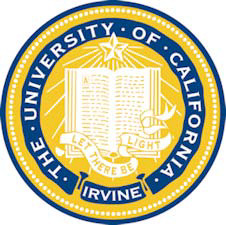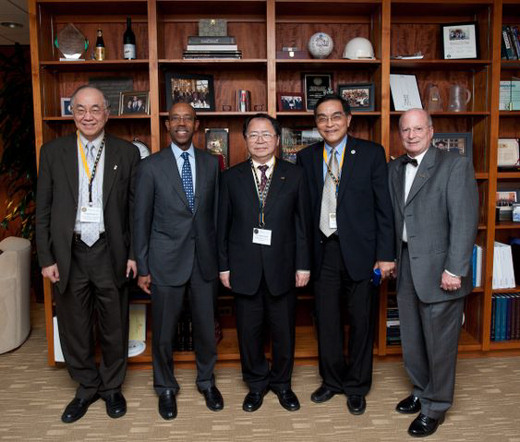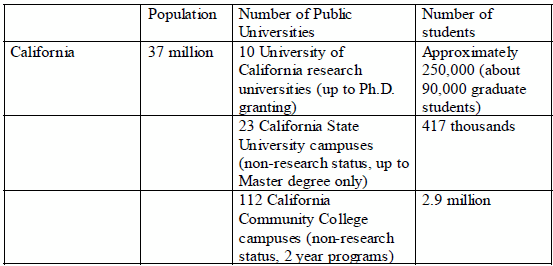Brief yet Heartfelt Chat with Chancellor Michael Drake of
University of California Irvine

Da Hsuan Feng 馮達旋
Senior Vice President for Global Strategies, Planning and Assessment
National Tsing Hua University
Hsinchu, Taiwan, ROC
On February 2, 2012, a subgroup of the University System of Taiwan(UST), led by Academician Lih J. Chen, President of National Tsing Hua University(NTHU), Vice Chancellor Y. S. Liu, Senior Vice President Da Hsuan Feng, Vice President for Global Affairs W. C. Wang, Dr. Chi-shin Chang and Ms. Pei-Chi Ko(all from NTHU)had a day-long intensive and info-rich meeting with various senior administrators of one of University of California(UC)campuses:Irvine.
Irvine is one of the four campuses of UC which UST delegation visited on this visit. The mission is surgical:to gather detailed information as to how each campus interacts with the “System” office and how they function as independent entity.
Among the many extensive and in depth one-on-many meetings we had at UCI, one was with Chancellor Michael Drake. The main topic of our discussion centered on the philosophical meaning of board governance of a university. The discussion was indeed very profound and poignant.

From left to right, Vice Chancellor Y. S. Liu, Chancellor Michael Drake, President Lih J. Chen, Senior Vice President Da Hsuen Feng and Larry Gold
Photo courtesy by Peter Huynh
In many way, as two economically progressive regions, the social pressure on and responsibilities of public higher education of Taiwan and California are not that different. California, however, made a very concerted effort in the late 60’s and early 70’s in designing one of the most successful higher education systems in the world, known as the California Higher Education Master Plan(http://www.ucop.edu/acadinit/mastplan/mp.htm.)The result of the Master Plan can be succinctly given in the following table.

From the above table, it appears that the fundamental and profound difference between Taiwan and California is that despite we in Taiwan have some universities under the auspices of the so-called “Division of Higher Education” and some under the auspices of the so-called “Division of Technological Education” of the Ministry of Education, nearly all, if not all, consider themselves as “research” and hence Ph.D. granting.
Our conversation with Chancellor Drake quickly drifted to the discussion of what are the most optimum responsibilities of the Board of Regents of the University of California.
It should be mentioned that Chancellor Drake has a very board background. He began his academic career as a research faculty in the Department of Ophthalmology at University of California at San Francisco. He later worked in the UC System office as a director of policy for the five University of California medical schools(SF, Davis, Irvine, LA and SD)as well as many other health sciences programs. By having extensive and deep experiences both from the campus and the system office, his view of the mission of the Board of Regents of the University of California is very telling. In fact, it is very beneficial in UST’s deliberation of having a Board that we take what Drake said into consideration.
In recent years, within the University of California system, there are discussions, or debates, as to whether the Board of Regents should be at the system level or whether each campus should have its own Board. The reason is obvious. Can a Board of Regents which sits in the System level really cater to the needs of individual campus I am sure such discussions or debates must have been around for a long time, but because of the exasperated financial pressure on California in general, University of California in particular, this became more acute.
“Ultimately that boils down to how much social responsibilities public higher education, especially the research universities, have,” according to Chancellor Drake. As a alumnus of Stanford University, Chancellor Drake said that members of a Board for a private university, really should worry about how to make the university they are responsible for better. As private universities, “social responsibilities” would not be on burner. It should be mentioned that making Stanford University even better is not necessarily inconsistent in having greater social impact.
The Master Plan of California was designed to render the University of California to be both the intellectual and economic engine of the State. To that end, the universities within the System has special responsibilities to ensure that every talented individual within the State, independent of race, creed and financial conditions, should be able to receive education/training from such an outstanding System. To this end, Chancellor Drake thinks that if each campus of the University of California has its own Board, then in all likelihood, members of the Board may be compelled, very analogously to a private university Board, such as Stanford, to feel that it should pay more to “local issues,” rather than think more broadly and deeply about the social responsibilities of the University of California.
This view, to me, is at the heart of the matter of public universities in a modern society in the 21st century. It needs in depth discussion. Chancellor Drake touched on the tip of the iceberg.
In fact, personally, I am not sure that it is an either/or issue, but it is one which the University System of Taiwan needs to carefully take into consideration.
We left Chancellor Drake office a little wiser.
More about the four campuses we visited
The four campuses were chosen on three criteria. First, we need to fit the visit into the tight time which we have allotted to this visit. Second, we wanted to visit four campuses where each has unique characteristics. Third, our visit could fit into the busy schedules of administrators of these campuses. With that in mind, we selected Berkeley, Santa Barbara, San Diego and Irvine as our four campuses.

From the following, we see very clearly that all four campuses are highly regarded worldwide. Independent of any now recognized rankings, all four are highly ranked. It is interesting that their rankings are usually “double digits”(<50). This is probably a characteristic of universities which are “public” in nature since it has to “cater” to the society and not just the elite.

It should be mentioned that of the 10 campuses of University of California, 6(Berkeley, LA, SD, Irvine, Santa Barbara and Davis)are members of the elite group of universities in the United States known as American Associated of Universities(AAU.)One of them, San Francisco, is a medical/life science university and so is not qualified by definition. Merced is a new university, and hence is well below AAU’s qualification threshold. So only two, Santa Cruz and Riverside remain outside AAU.
By comparison, for the University of Texas system, of the 9 comprehensive universities(the other 6 are medical/life science universities,)only one, the University of Texas at Austin, is a member of AAU. The same is also true for the Texas A and M system, in which only Texas A&M in College Station is in AAU.

















